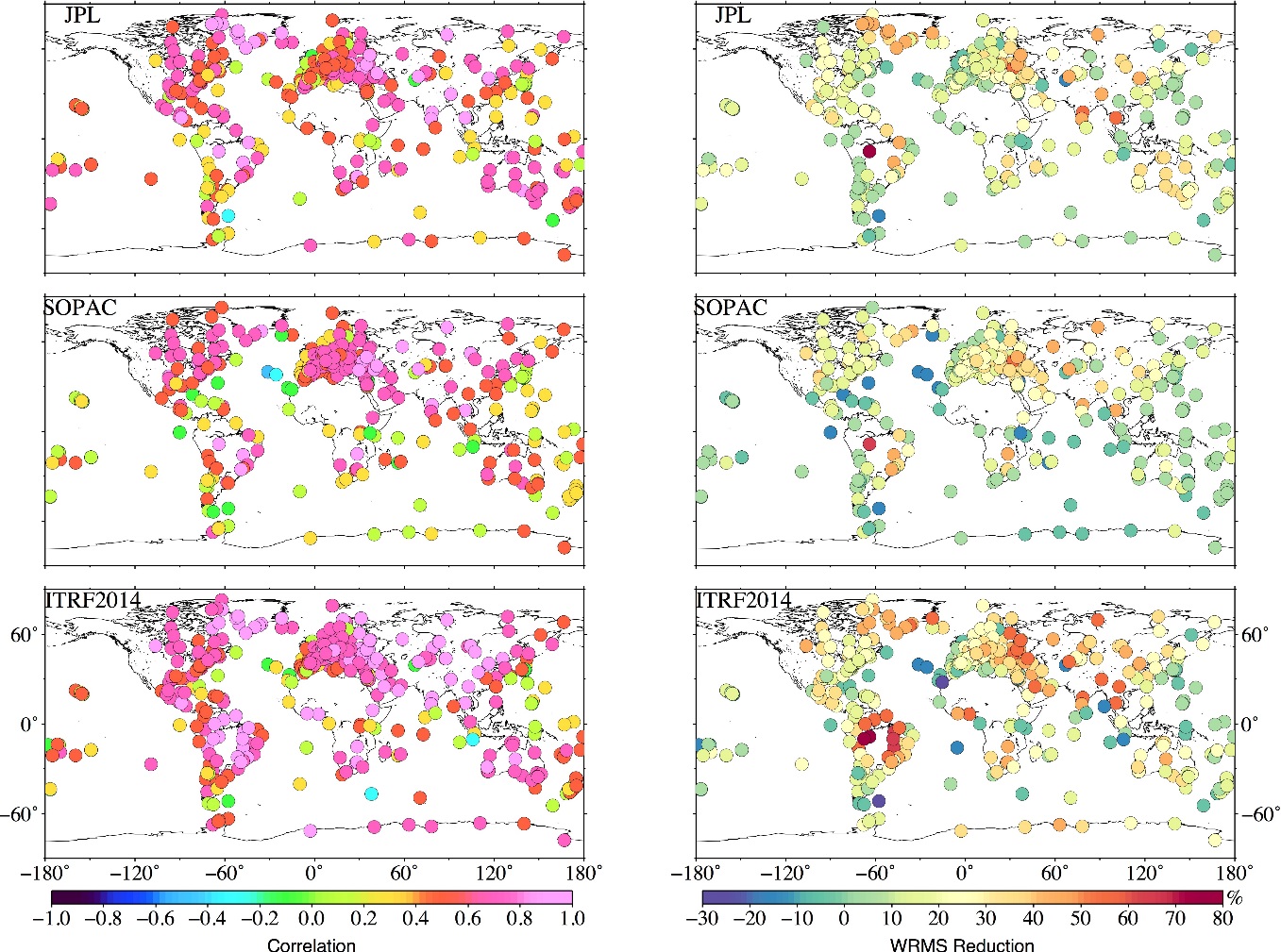Continuing with the last blog entry from Universite du luxembourg regarding the preliminary data processing for GPS validation, we present an update on our work validating the EGSIEM combined monthly GRACE gravity fields using GPS observations.
Apart from the JPL and SOPAC GPS time series, the latest ITRF2014 solutions have also been adopted in this validation. The last ITRF2014 GPS time series were obtained from IGN in France, by rigorously stacking the latest IGS Repro2 daily solution, detrending, and restoring the annual and semi-annual signals.
To be compared with GPS observed displacements, we must preprocess the EGSIEM combined monthly GRACE gravity fields first. The first step is to replace C20 coefficients in the EGSIEM combined GRACE gravity coefficients with SLR-derived coefficients and add back degree-1 coefficients from Swenson et al., (2008). Next, we filter the GRACE gravity coefficients using the Gaussian filtering with a smoothing radius of 500 km. The third step is to restore the atmospheric and oceanic loading effects by adding back AOD1B GAC products to be consistent with GPS solutions. Finally, spherical harmonic gravity coefficients are converted into displacements in the Center of Figure (CF) frame using the spherical harmonic approach.
For the GPS data, daily GPS solutions are averaged into monthly solutions to be comparable with GRACE in the temporal domain. Figure 1 shows the scatter plots of comparison in terms of correlation and WRMS reduction. The corresponding statistics are summarized in Table 1.

Figure 1: Correlations and WRMS reductions between three GPS solutions and the EGSIEM derived displacements. Up to 75% WRMS reduction is observed at POVE for JPL and ITRF2014 solutions.

Table 1: Statistics between GPS and EGSIEM. High percentages of stations with positive WRMS reductions are observed using the three GPS solutions.
Clearly, the EGSIEM combined gravity fields agree with the three different GPS solutions. WRMS of the global GPS height displacements from more than 85% of the used stations could be reduced by the EGSIEM combined gravity fields. In particular, the ITRF2014 solutions provide the most stations with positive WRMS reduction and the highest mean WRMS reduction.
In the future, cross-validation of the EGSIEM gravity fields with other existing GRACE gravity models using GPS observations will be done. Several existing GRACE gravity models, e.g. gravity models from GFZ and CSR, will also be adopted for the cross-validation.
